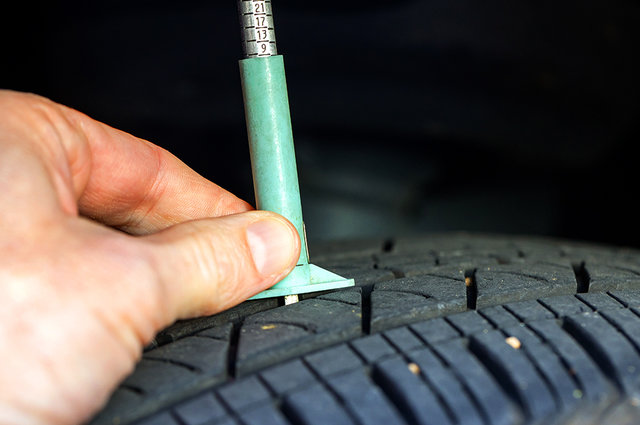February 02 2024
Ford Lightning: The Ford F-150 Electric VehicleAs we look toward the future, we are stepping into the conversations around electric vehicles...

Tires play a vital role in the performance and safety of your vehicle, so it's important to understand the basics of how they work. Tires are designed to deliver ideal performance and handling geared to specific vehicle and driving habits. Naturally, you want your tires to last as long as possible. One way to extend tire life is through proper care and maintenance, which is important for safe operation and may help increase fuel efficiency. By regularly checking your tires' inflation levels, tread depth, and alignment, you can help ensure that they wear evenly and perform optimally. Additionally, making sure to rotate your tires regularly can help prevent premature wear and tear. By following these simple tips, you can help keep your tires in good condition for miles to come.
Tire tread depth is an important aspect of tire maintenance. The depth of the tread impacts the tire's grip on the road, as well as its ability to displace water. A simple way to check tread depth is by using a toonie. If the tread covers just the silver portion, the tire is about half worn. However, if only the words "Canada" or "Dollars" are visible, then the tread is too shallow and the tire should be replaced.
In addition to checking tread depth, it is also important to regularly inspect the sidewalls for bulges and cracks. These can lead to slow leaks or even blowouts while driving. Sidewall damage is often caused by driving over potholes or hitting curbs.
Tires are an essential part of any vehicle, and they play a number of important roles. Perhaps most importantly, they provide traction, which helps the driver to change or maintain direction. They also assist in stopping the car while braking, and help to support the weight of the vehicle. In addition, tires play a role in absorbing shock, which helps to protect the passengers and cargo from being jolted too harshly by bumps in the road. With so many important functions, it's no wonder that tires are one of the most essential components of any car.
What does this mean?
Tires that are “in the red” (3/32” and less in tread or have other defects) require immediate attention.
Worn or damaged tires may lead to:
Other Articles That May Interest You
February 02 2024
Ford Lightning: The Ford F-150 Electric VehicleAs we look toward the future, we are stepping into the conversations around electric vehicles...
October 05 2023
Navigating Jubilee Ford’s SUV Trio: Expedition, Edge, and EscapeIntroduction Jubilee Ford has earned its reputation as a brand that excels in the world of SUVs,...